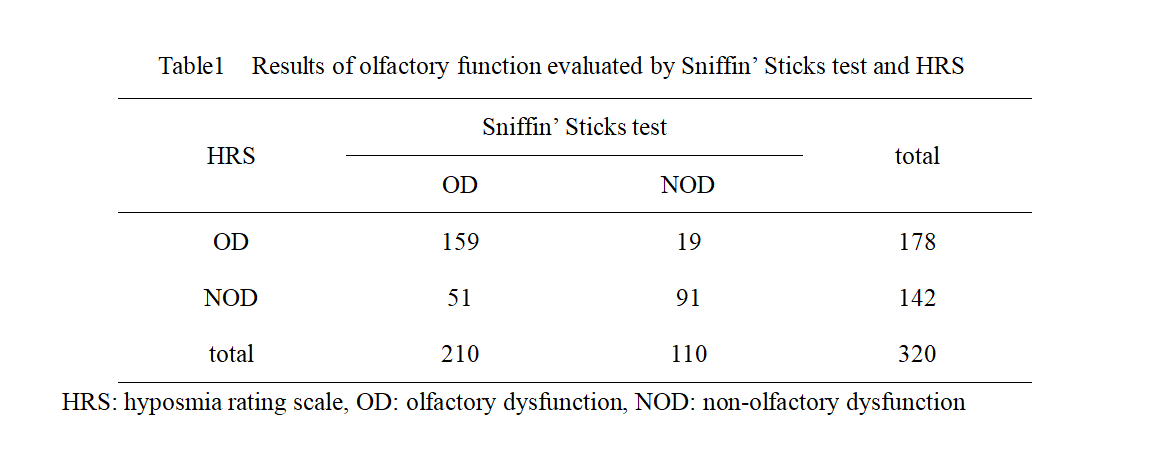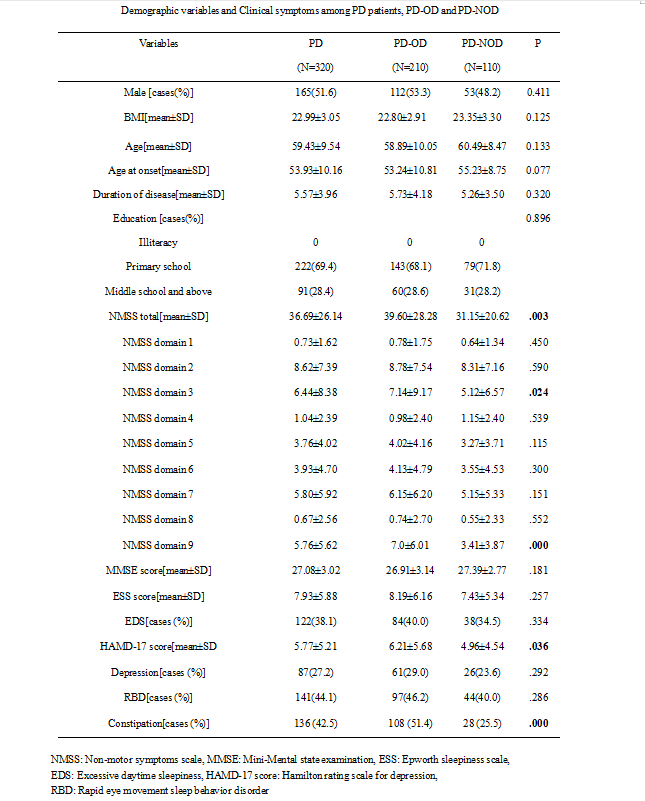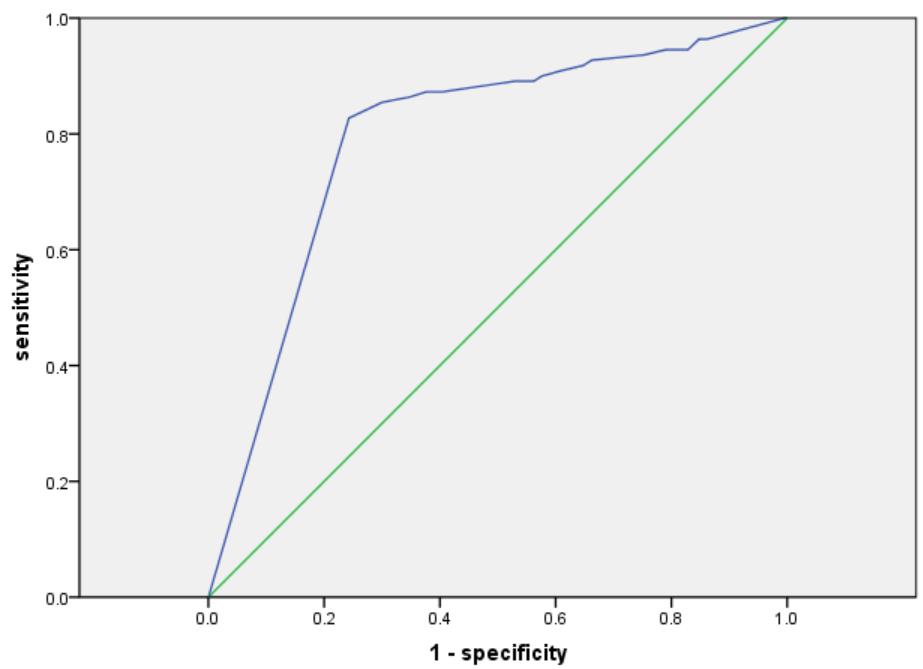Category: Parkinson's Disease: Non-Motor Symptoms
Objective: To investigate the reliability of assessing olfactory function of patients with PD by HRS in China and compare other non-motor features between patients with PD with olfactory dysfunction (PD-OD) and patients with PD without olfactory dysfunction (PD-NOD) according to the result of olfactory function appraised by Sniffin’ Sticks test.
Background: Hyposmia used as an important support standard for diagnosing PD is one of the best characterized and most common non-motor features in PD. Because it takes a long time to use Sniffin’ Sticks test to assess olfactory function, it isn’t used widely in clinical. In 2012, a researcher proposed a method for assessing olfactory function in the patients with PD, which is simple, economical, time-saving and reliable. It’s hyposmia rating scale (HRS).
Method: A total of 320 patients with clinically confirmed or clinically possible PD were recruited. All patients signed informed consent and they were all registered in the database named Parkinson’s Disease and Movement Disorders Multicenter Database and Collaborative Network in China (PD-MDCNC). Assess olfactory function of all participants with HRS and the Sniffin’ Sticks test. Collect demographic data and clinical information, and patients were evaluated using standardized assessment protocols. With reference to the Sniffin’ Sticks test, compute the specificity, sensitivity, coincidence rate and Kappa value of HRS, then evaluate its reliability. We divided patients into PD-OD and PD-NOD groups based on the result of olfactory function assessed by Sniffin’ Sticks test. Clinical manifestations were compared between PD-OD and PD-NOD.
Results: The frequency of OD evaluated by the Sniffin’ Sticks test was 65.6%, while the percentage of OD was 55.6% when using HRS measured olfactory function. Referring to the Sniffin’ Sticks test, the specificity, sensitivity, coincidence rate and Kappa value of HRS were 82.73%, 75.71%, 78.13% and 0.55, respectively. The area under ROC curve (AUC) of HRS was 0.793.There was no difference in demographic information between PD-OD and PD-NOD. Patients with hyposmia had more severe non-motor symptoms.
Conclusion: HRS is of great value as a self-assessment scale for evaluating olfactory function, especially in PD patients over 55. Moreover, PD patients with hyposmia have more severe non-motor features than PD patients without hyposmia, mainly in terms of mood and constipation.
To cite this abstract in AMA style:
Y.J Zhou, R.C He, Y.W Zhao, XX. Yan, B.S Tang, J.F Guo. Olfactory dysfunction and its relationship with clinical features of Parkinson’s disease [abstract]. Mov Disord. 2020; 35 (suppl 1). https://www.mdsabstracts.org/abstract/olfactory-dysfunction-and-its-relationship-with-clinical-features-of-parkinsons-disease/. Accessed December 14, 2025.« Back to MDS Virtual Congress 2020
MDS Abstracts - https://www.mdsabstracts.org/abstract/olfactory-dysfunction-and-its-relationship-with-clinical-features-of-parkinsons-disease/



